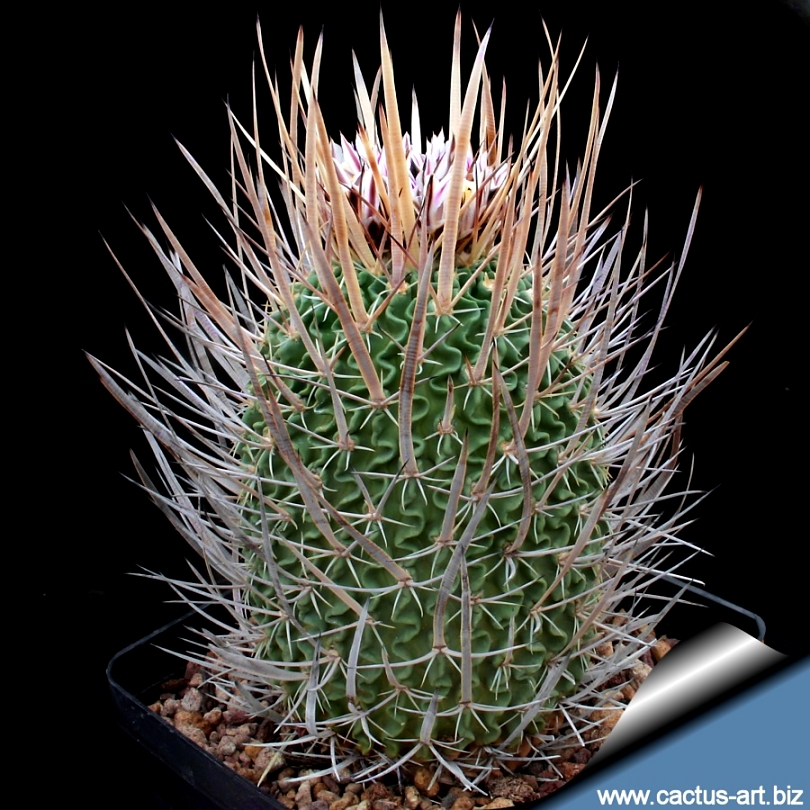|
|
|

E. phyllacanthus an old
specimen
This is one of the
best of the genus.
|
|
Description: Generally solitary round cactus with white spines
and numerous wavy ribs. Older plants sometimes get corky near the base.
Flowers: Abundant cream and violet-brown flowers. Photo of conspecific
taxa, varieties, forms and cultivars of plants
belonging to the Echinofossulocactus
phyllacanthus
complex (This
Taxon has lots of synonyms (like
most Echinofossulocactus) whit several controversial varieties
and subspecies):
|
|
Advertising
|
|
|
|
|
Family:
Cactaceae (Cactus
Family)
Scientific name:
Stenocactus phyllacanthus (A. Dietrich
et Otto) A. Berger ex A. W. Hill 1933, (Mexico)
Habitat: This species grows and hides in
high grass, and the spines that looks like dried grass leaves, make the
plants almost invisible in their natural environment.
Etymology: The specific epithet
"phyllacanthus"
(leaf-spine) derives from the greek words “phyllon” (φυλλον) = leaf and
“acantha” (ακανθα) = spine.
Synonyms:
- Echinofossulocactus phyllacanthus
(A. Dietrich et Otto) Lawrence 18
= Echinocactus phyllacanthus A. Dietrich et Otto 1836
= Ferocactus phyllacanthus (A. Dietrich et Otto) N. P. Taylor
1980
= Brittonrosea phyllacantha
= Efossus phyllacanthus
- Echinofossulocactus tricuspidatus
(Scheidweiler) Britton et Rose 1922
= Echinocactus tricuspidatus Scheidweiler 1841
= Stenocactus tricuspidatus (Scheidweiler) A. Berger 1929
Stenocactus (E.) tricuspidatus (a
multiheaded species) has been moved into S. phyllacanthus in the
most recent revisions. |
|
|
|
Culture: Easy to to
care and flower. No absolute schedule can be given
for watering as various factors (Soil mixture, containers,
drainage, temperature, size of plant) influence water use, so - as
a general rule - the soil should be thoroughly wetted at each watering
during the active growing season (spring and summer), water when the top
1,5- 2 cm of soil feels dry to the finger. Do not soak the soil during
the dormant period. Be careful, excessive watering can make root and/or
stem to rots. Make sure there is good air circulation between plants.
Good drainage is essential along good moisture retention properties and
adequate nutrients availability. Require bright sunlight to grow well.
Dormant plants do best at temperatures from 5-10°C (but will tolerate
-5° for short periods). The cooler temperatures develop sturdier plants
and encourage the formation of flower buds.
Pests: The narrow ribs, the wooly areoles, and the dense spines
are an ideal habitat for mealy bugs. Frequent inspection of the plants
will prevent them from spreading.

 |
|